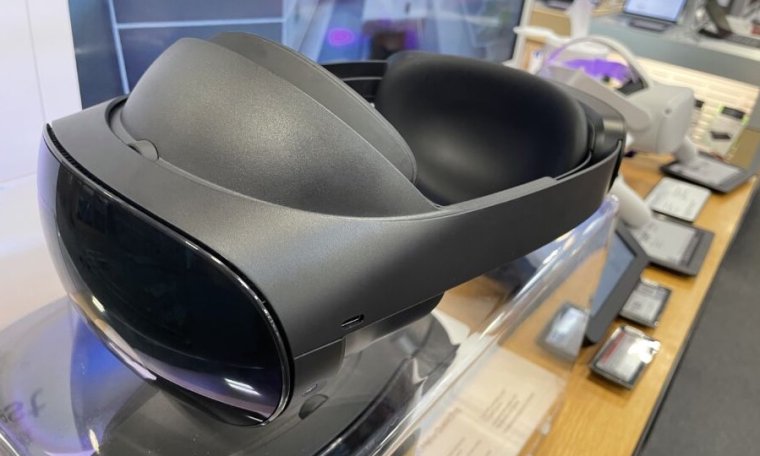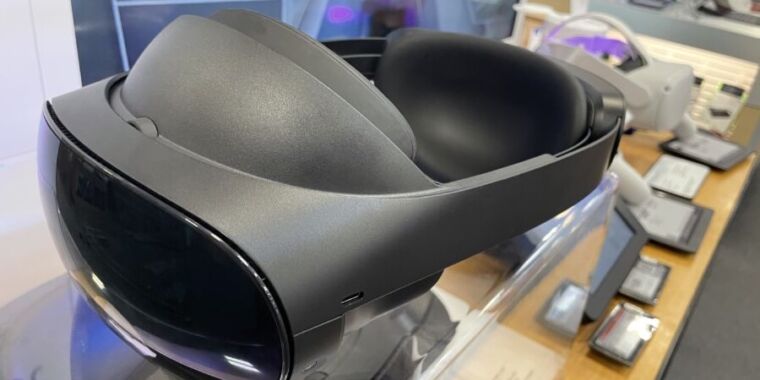
The next Meta Quest headset, planned for launch this year, will be thinner, twice as powerful, and slightly more expensive than the Quest 2. That’s according to a leaked internal hardware roadmap presentation obtained by The Verge that also includes plans for high-end, smartband-controlled, ad-supported AR glasses by 2027.
The “Quest 3” will also include a new “Smart Guardian” system that lets users walk around safely in “mixed reality,” according to the presentation. That will come ahead of a more “accessible” headset, codenamed Ventura, which is planned for a release in 2024 at “the most attractive price point in the VR consumer market.”
That Ventura description brings to mind John Carmack’s October Meta Connect keynote, in which he highlighted his push for a “super cheap, super lightweight headset” targeting “$250 and 250 grams.” Carmack complained that Meta is “not building that headset today, but I keep trying.” Months later, Carmack announced he was leaving the company, complaining that he was “evidently not persuasive enough” to change the company for the better.
A third planned Meta VR headset, codenamed La Jolla and planned for “way out in the future” after Ventura, will feature enough power and resolution for the company’s long-planned, photorealistic “codec avatars.” This headset will be akin to the Quest Pro in terms of “how it sits on your head” and its focus on “work use… text and things like that,” according to a presentation by Meta VP for VR Mark Rabkin.
Put Facebook on your face
All those VR-focused headsets may just be a stepping stone, though, on Meta’s planned path to what it sees as revolutionary see-through augmented reality glasses. In traveling this path, the company initially plans to build on the 2021 release of the “Rayban Stories” glasses, which are primarily focused on simple voice commands and smartphone integration with a built-in camera.
A 2022 presentation shows off a prototype of Meta’s wristband AR controls.
By 2025, that basic design will have evolved into glasses with an integrated display that can show incoming text messages or translate text in real time. Those glasses will also make use of a planned “neural interface” band. The smartwatch-style wrist device, which Meta has demonstrated in the past, will be able to read wrist and finger movements to enable features like virtual D-pads and keyboards floating in mid-air.
Those glasses are in a separate product line from a more advanced, more expensive set of AR glasses, codenamed Orion, which Meta says is designed for projecting high-quality holograms on top of the real world. The glasses, which aren’t planned for public release until 2027, will partly rely on ads projected on top of a user’s view of the real world.
“I think it’s easy to imagine how ads would show up in space when you have AR glasses on,” Meta VP for AR Alex Himel told employees, according to The Verge. “Our ability to track conversions, which is where there has been a lot of focus as a company, should also be close to 100 percent.”
That sounds more than a little concerning coming from a company known for the creepier side of ad tracking technology. Who knows, though—in 10 years, Meta’s amazing AR glasses may make fishing a smartphone out of your pocket dozens of times a day seem as quaint as using a phone booth.
News of Meta’s VR/AR product plans comes as the company lost more than $1 billion per month on its VR/AR-focused Reality Labs division in 2022 and a few months after the company laid off 13 percent of its workforce in a recognition that some recent investments hadn’t paid off.








